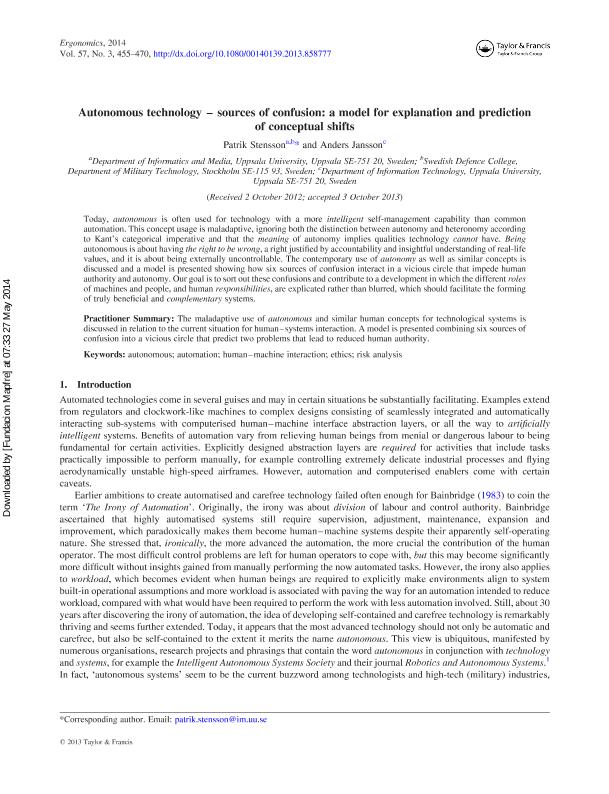Autonomous technology - sources of confusion : a model for explanation and prediction of conceptual shifts

Contenido multimedia no disponible por derechos de autor o por acceso restringido. Contacte con la institución para más información.
| Tag | 1 | 2 | Valor |
|---|---|---|---|
| LDR | 00000cab a2200000 4500 | ||
| 001 | MAP20140019397 | ||
| 003 | MAP | ||
| 005 | 20140530130409.0 | ||
| 008 | 140527e20140303esp|||p |0|||b|spa d | ||
| 040 | $aMAP$bspa$dMAP | ||
| 084 | $a875 | ||
| 100 | 1 | $0MAPA20140009466$aStensson, Patrik | |
| 245 | 1 | 0 | $aAutonomous technology - sources of confusion$b: a model for explanation and prediction of conceptual shifts$cPatrik Stensson, Anders Jansson |
| 520 | $aToday, autonomous is often used for technology with a more intelligent self-management capability than common automation. This concept usage is maladaptive, ignoring both the distinction between autonomy and heteronomy according to Kant's categorical imperative and that the meaning of autonomy implies qualities technology cannot have. Being autonomous is about having the right to be wrong, a right justified by accountability and insightful understanding of real-life values, and it is about being externally uncontrollable. The contemporary use of autonomy as well as similar concepts is discussed and a model is presented showing how six sources of confusion interact in a vicious circle that impede human authority and autonomy. Our goal is to sort out these confusions and contribute to a development in which the different roles of machines and people, and human responsibilities, are explicated rather than blurred, which should facilitate the forming of truly beneficial and complementary systems. | ||
| 773 | 0 | $wMAP20100019818$tErgonomics : the international journal of research and practice in human factors and ergonomics$dOxon [United Kingdom] : Taylor & Francis, 2010-$x0014-0139$g03/03/2014 Volumen 57 Número 3 - marzo 2014 |

